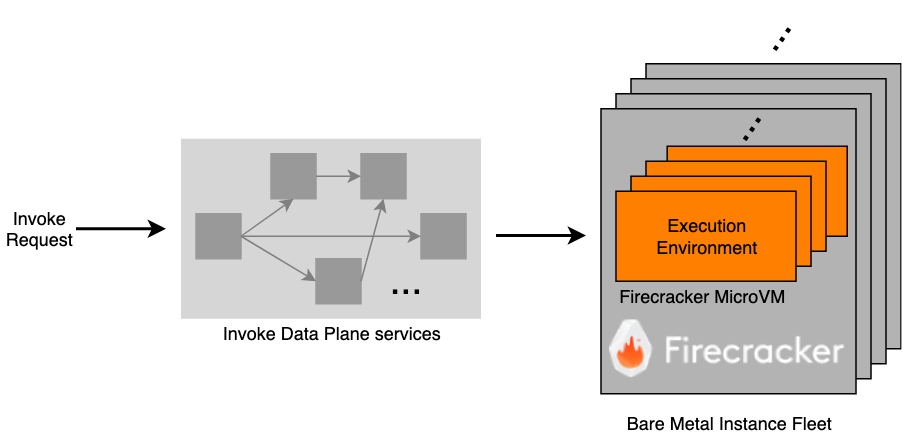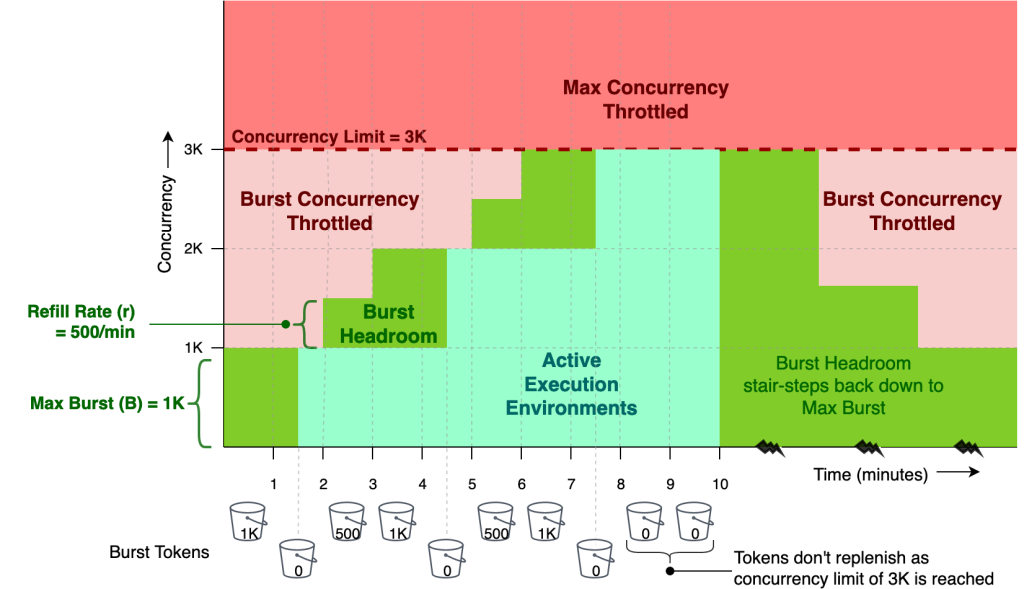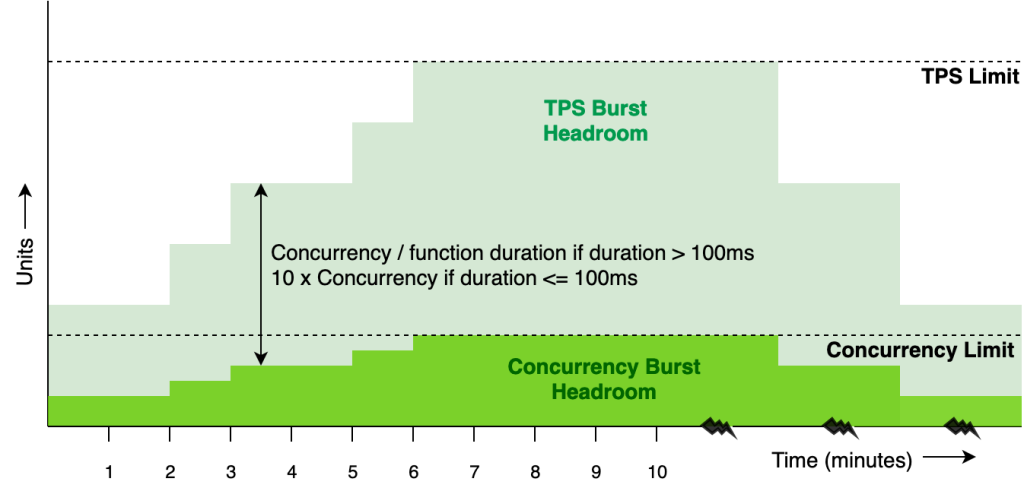Post Syndicated from Deepak Kovvuri original https://aws.amazon.com/blogs/devops/deploy-serverless-applications-in-a-multicloud-environment-using-amazon-codecatalyst/
Amazon CodeCatalyst is an integrated service for software development teams adopting continuous integration and deployment practices into their software development process. CodeCatalyst puts the tools you need all in one place. You can plan work, collaborate on code, and build, test, and deploy applications by leveraging CodeCatalyst Workflows.
Introduction
In the first post of the blog series, we showed you how organizations can deploy workloads to instances, and virtual machines (VMs), across hybrid and multicloud environment. The second post of the series covered deploying containerized application in a multicloud environment. Finally, in this post, we explore how organizations can deploy modern, cloud-native, serverless application across multiple cloud platforms. Figure 1 shows the solution which we walk through in the post.

Figure 1 – Architecture diagram
The post walks through how to develop, deploy and test a HTTP RESTful API to Azure Functions using Amazon CodeCatalyst. The solution covers the following steps:
- Set up CodeCatalyst development environment and develop your application using the Serverless Framework.
- Build a CodeCatalyst workflow to test and then deploy to Azure Functions using GitHub Actions in Amazon CodeCatalyst.
An Amazon CodeCatalyst workflow is an automated procedure that describes how to build, test, and deploy your code as part of a continuous integration and continuous delivery (CI/CD) system. You can use GitHub Actions alongside native CodeCatalyst actions in a CodeCatalyst workflow.
Pre-requisites
- An AWS Builder ID for signing into CodeCatalyst.
- To create a space in CodeCatalyst, or be added to a space and have the space administrator role assigned to you in that space. For more information, see Creating a space in CodeCatalyst, Managing members of your space, and Space administrator role.
- Access to an Azure and credentials for a service principal that has permissions to create and manage Azure Functions.
Walkthrough
In this post, we will create a hello world RESTful API using the Serverless Framework. As we progress through the solution, we will focus on building a CodeCatalyst workflow that deploys and tests the functionality of the application. At the end of the post, the workflow will look similar to the one shown in Figure 2.

Figure 2 – CodeCatalyst CI/CD workflow
Environment Setup
Before we start developing the application, we need to setup a CodeCatalyst project and then link a code repository to the project. The code repository can be CodeCatalyst Repo or GitHub. In this scenario, we’ve used GitHub repository. By the time we develop the solution, the repository should look as shown below.

Figure 3 – Files in GitHub repository
In Amazon CodeCatalyst, there’s an option to create Dev Environments, which can used to work on the code stored in the source repositories of a project. In the post, we create a Dev Environment, and associate it with the source repository created above and work off it. But you may choose not to use a Dev Environment, and can run the following commands, and commit to the repository. The /projects directory of a Dev Environment stores the files that are pulled from the source repository. In the dev environment, install the Serverless Framework using this command:
npm install -g serverlessand then initialize a serverless project in the source repository folder:
├── README.md
├── host.json
├── package.json
├── serverless.yml
└── src
└── handlers
├── goodbye.js
└── hello.jsWe can push the code to the CodeCatalyst project using git. Now, that we have the code in CodeCatalyst, we can turn our focus to building the workflow using the CodeCatalyst console.
CI/CD Setup in CodeCatalyst
Configure access to the Azure Environment
We’ll use the GitHub action for Serverless to create and manage Azure Function. For the action to be able to access the Azure environment, it requires credentials associated with a Service Principal passed to the action as environment variables.
Service Principals in Azure are identified by the CLIENT_ID, CLIENT_SECRET, SUBSCRIPTION_ID, and TENANT_ID properties. Storing these values in plaintext anywhere in your repository should be avoided because anyone with access to the repository which contains the secret can see them. Similarly, these values shouldn’t be used directly in any workflow definitions because they will be visible as files in your repository. With CodeCatalyst, we can protect these values by storing them as secrets within the project, and then reference the secret in the CI\CD workflow.
We can create a secret by choosing Secrets (1) under CI\CD and then selecting ‘Create Secret’ (2) as shown in Figure 4. Now, we can key in the secret name and value of each of the identifiers described above.

Figure 4 – CodeCatalyst Secrets
Building the workflow
To create a new workflow, select CI/CD from navigation on the left and then select Workflows (1). Then, select Create workflow (2), leave the default options, and select Create (3) as shown in Figure 5.

Figure 5 – Create CI/CD workflow
If the workflow editor opens in YAML mode, select Visual to open the visual designer. Now, we can start adding actions to the workflow.
Configure the Deploy action
We’ll begin by adding a GitHub action for deploying to Azure. Select “+ Actions” to open the actions list and choose GitHub from the dropdown menu. Find the Build action and click “+” to add a new GitHub action to the workflow.
Next, configure the GitHub action from the configurations tab by adding the following snippet to the GitHub Actions YAML property:
- name: Deploy to Azure Functions
uses: serverless/[email protected]
with:
args: -c "serverless plugin install --name serverless-azure-functions && serverless deploy"
entrypoint: /bin/sh
env:
AZURE_SUBSCRIPTION_ID: ${Secrets.SUBSCRIPTION_ID}
AZURE_TENANT_ID: ${Secrets.TENANT_ID}
AZURE_CLIENT_ID: ${Secrets.CLIENT_ID}
AZURE_CLIENT_SECRET: ${Secrets.CLIENT_SECRET}The above workflow configuration makes use of Serverless GitHub Action that wraps the Serverless Framework to run serverless commands. The action is configured to package and deploy the source code to Azure Functions using the serverless deploy command.
Please note how we were able to pass the secrets to GitHub action by referencing the secret identifiers in the above configuration.
Configure the Test action
Similar to the previous step, we add another GitHub action which will use the serverless framework’s serverless invoke command to test the API deployed on to Azure Functions.
- name: Test Function
uses: serverless/[email protected]
with:
args: |
-c "serverless plugin install --name serverless-azure-functions && \
serverless invoke -f hello -d '{\"name\": \"CodeCatalyst\"}' && \
serverless invoke -f goodbye -d '{\"name\": \"CodeCatalyst\"}'"
entrypoint: /bin/sh
env:
AZURE_SUBSCRIPTION_ID: ${Secrets.SUBSCRIPTION_ID}
AZURE_TENANT_ID: ${Secrets.TENANT_ID}
AZURE_CLIENT_ID: ${Secrets.CLIENT_ID}
AZURE_CLIENT_SECRET: ${Secrets.CLIENT_SECRET}The workflow is now ready and can be validated by choosing ‘Validate’ and then saved to the repository by choosing ‘Commit’. The workflow should automatically kick-off after commit and the application is automatically deployed to Azure Functions.
The functionality of the API can now be verified from the logs of the test action of the workflow as shown in Figure 6.

Figure 6 – CI/CD workflow Test action
Cleanup
If you have been following along with this workflow, you should delete the resources you deployed so you do not continue to incur charges. First, delete the Azure Function App (usually prefixed ‘sls’) using the Azure console. Second, delete the project from CodeCatalyst by navigating to Project settings and choosing Delete project. There’s no cost associated with the CodeCatalyst project and you can continue using it.
Conclusion
In summary, this post highlighted how Amazon CodeCatalyst can help organizations deploy cloud-native, serverless workload into multi-cloud environment. The post also walked through the solution detailing the process of setting up Amazon CodeCatalyst to deploy a serverless application to Azure Functions by leveraging GitHub Actions. Though we showed an application deployment to Azure Functions, you can follow a similar process and leverage CodeCatalyst to deploy any type of application to almost any cloud platform. Learn more and get started with your Amazon CodeCatalyst journey!
We would love to hear your thoughts, and experiences, on deploying serverless applications to multiple cloud platforms. Reach out to us if you’ve any questions, or provide your feedback in the comments section.



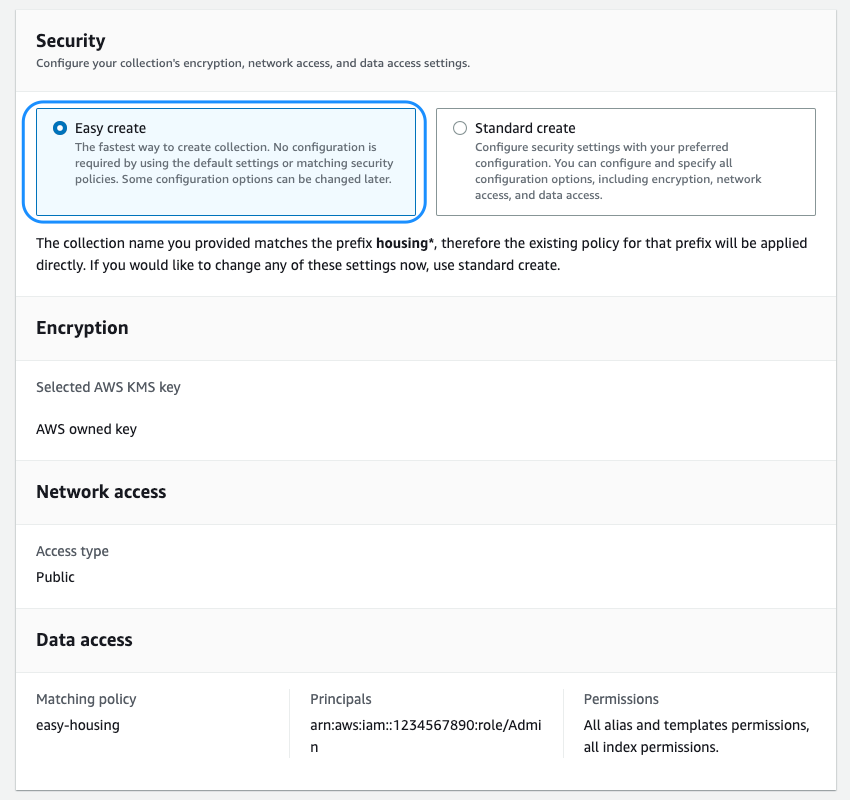


 Pavani Baddepudi is a Principal Product Manager for Search Services at AWS and the lead PM for OpenSearch Serverless. Her interests include distributed systems, networking, and security. When not working, she enjoys hiking and exploring new cuisines.
Pavani Baddepudi is a Principal Product Manager for Search Services at AWS and the lead PM for OpenSearch Serverless. Her interests include distributed systems, networking, and security. When not working, she enjoys hiking and exploring new cuisines. Carl Meadows is Director of Product Management at AWS and is responsible for Amazon Elasticsearch Service, OpenSearch, Open Distro for Elasticsearch, and Amazon CloudSearch. Carl has been with Amazon Elasticsearch Service since before it was launched in 2015. He has a long history of working in the enterprise software and cloud services spaces. When not working, Carl enjoys making and recording music.
Carl Meadows is Director of Product Management at AWS and is responsible for Amazon Elasticsearch Service, OpenSearch, Open Distro for Elasticsearch, and Amazon CloudSearch. Carl has been with Amazon Elasticsearch Service since before it was launched in 2015. He has a long history of working in the enterprise software and cloud services spaces. When not working, Carl enjoys making and recording music.






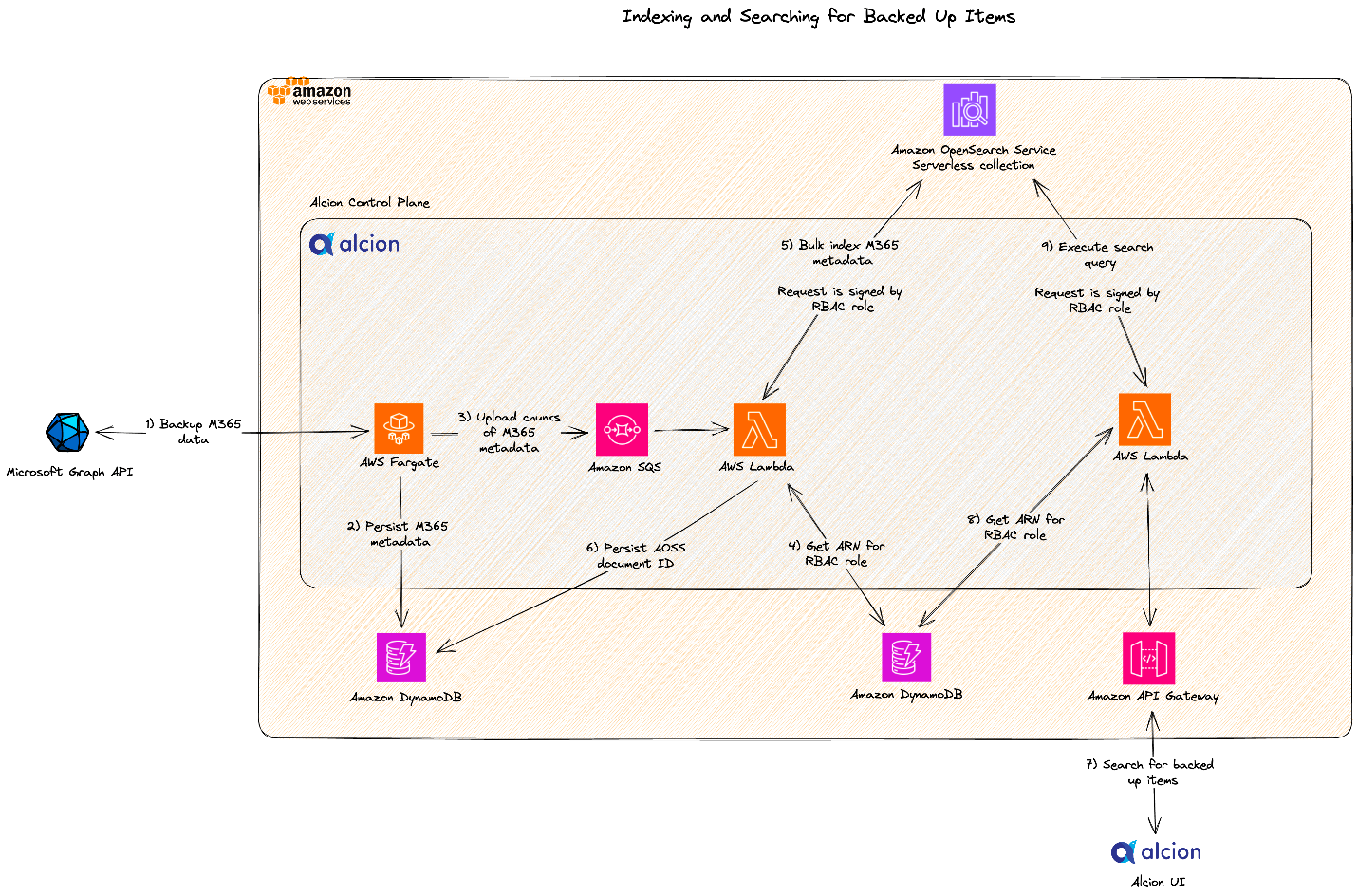
 Zack Rossman is a Member of Technical Staff at Alcion. He is the tech lead for the search and AI platforms. Prior to Alcion, Zack was a Senior Software Engineer at Okta, developing core workforce identity and access management products for the Directories team.
Zack Rossman is a Member of Technical Staff at Alcion. He is the tech lead for the search and AI platforms. Prior to Alcion, Zack was a Senior Software Engineer at Okta, developing core workforce identity and access management products for the Directories team. Niraj Jetly is a Software Development Manager for Amazon OpenSearch Serverless. Niraj leads several data plane teams responsible for launching Amazon OpenSearch Serverless. Prior to AWS, Niraj led several product and engineering teams as CTO, VP of Engineering, and Head of Product Management for over 15 years. Niraj is a recipient of over 15 innovation awards, including being named CIO of the year in 2014 and top 100 CIO in 2013 and 2016. A frequent speaker at several conferences, he has been quoted in NPR, WSJ, and The Boston Globe.
Niraj Jetly is a Software Development Manager for Amazon OpenSearch Serverless. Niraj leads several data plane teams responsible for launching Amazon OpenSearch Serverless. Prior to AWS, Niraj led several product and engineering teams as CTO, VP of Engineering, and Head of Product Management for over 15 years. Niraj is a recipient of over 15 innovation awards, including being named CIO of the year in 2014 and top 100 CIO in 2013 and 2016. A frequent speaker at several conferences, he has been quoted in NPR, WSJ, and The Boston Globe. Jon Handler is a Senior Principal Solutions Architect at Amazon Web Services based in Palo Alto, CA. Jon works closely with OpenSearch and Amazon OpenSearch Service, providing help and guidance to a broad range of customers who have search and log analytics workloads that they want to move to the AWS Cloud. Prior to joining AWS, Jon’s career as a software developer included 4 years of coding a large-scale, ecommerce search engine. Jon holds a Bachelor of the Arts from the University of Pennsylvania and a Master of Science and a PhD in Computer Science and Artificial Intelligence from Northwestern University.
Jon Handler is a Senior Principal Solutions Architect at Amazon Web Services based in Palo Alto, CA. Jon works closely with OpenSearch and Amazon OpenSearch Service, providing help and guidance to a broad range of customers who have search and log analytics workloads that they want to move to the AWS Cloud. Prior to joining AWS, Jon’s career as a software developer included 4 years of coding a large-scale, ecommerce search engine. Jon holds a Bachelor of the Arts from the University of Pennsylvania and a Master of Science and a PhD in Computer Science and Artificial Intelligence from Northwestern University.





















 Satesh Sonti is a Sr. Analytics Specialist Solutions Architect based out of Atlanta, specialized in building enterprise data platforms, data warehousing, and analytics solutions. He has over 17 years of experience in building data assets and leading complex data platform programs for banking and insurance clients across the globe.
Satesh Sonti is a Sr. Analytics Specialist Solutions Architect based out of Atlanta, specialized in building enterprise data platforms, data warehousing, and analytics solutions. He has over 17 years of experience in building data assets and leading complex data platform programs for banking and insurance clients across the globe. Harshida Patel is a Specialist Principal Solutions Architect, Analytics with AWS.
Harshida Patel is a Specialist Principal Solutions Architect, Analytics with AWS. Raghu Kuppala is an Analytics Specialist Solutions Architect experienced working in the databases, data warehousing, and analytics space. Outside of work, he enjoys trying different cuisines and spending time with his family and friends.
Raghu Kuppala is an Analytics Specialist Solutions Architect experienced working in the databases, data warehousing, and analytics space. Outside of work, he enjoys trying different cuisines and spending time with his family and friends. Ashish Agrawal is a Sr. Technical Product Manager with Amazon Redshift, building cloud-based data warehouses and analytics cloud services. Ashish has over 24 years of experience in IT. Ashish has expertise in data warehouses, data lakes, and platform as a service. Ashish has been a speaker at worldwide technical conferences.
Ashish Agrawal is a Sr. Technical Product Manager with Amazon Redshift, building cloud-based data warehouses and analytics cloud services. Ashish has over 24 years of experience in IT. Ashish has expertise in data warehouses, data lakes, and platform as a service. Ashish has been a speaker at worldwide technical conferences.




 Tamara Astakhova is a Sr. Partner Solutions Architect in Data and Analytics at AWS. She has over 18 years of experience in the architecture and development of large-scale data analytics systems. Tamara is working with strategic partners helping them build complex AWS-optimized architectures.
Tamara Astakhova is a Sr. Partner Solutions Architect in Data and Analytics at AWS. She has over 18 years of experience in the architecture and development of large-scale data analytics systems. Tamara is working with strategic partners helping them build complex AWS-optimized architectures. Cameron Davie is a Principal Solutions Engineer for the Tech Alliances team. He oversees the technical responsibilities of Talend’s most strategic ISV partnerships. Cameron has been with Talend for 6 years in this role, working directly as the primary technical resource for partners such as AWS, Snowflake, and more. Cameron’s role at Talend is primarily focused on technical enablement and evangelism. This includes showcasing key capabilities of our partners’ solution internally as well as demonstrating Talend’s core technical capabilities with the technical sellers at Talend’s strategic ISV partners. Cameron is a veteran of ISV partnerships and enterprise software, with over 23 years of experience. Before Talend, he spent 14 years at SAP on their OEM/Embedded Solutions partnership team.
Cameron Davie is a Principal Solutions Engineer for the Tech Alliances team. He oversees the technical responsibilities of Talend’s most strategic ISV partnerships. Cameron has been with Talend for 6 years in this role, working directly as the primary technical resource for partners such as AWS, Snowflake, and more. Cameron’s role at Talend is primarily focused on technical enablement and evangelism. This includes showcasing key capabilities of our partners’ solution internally as well as demonstrating Talend’s core technical capabilities with the technical sellers at Talend’s strategic ISV partners. Cameron is a veteran of ISV partnerships and enterprise software, with over 23 years of experience. Before Talend, he spent 14 years at SAP on their OEM/Embedded Solutions partnership team.















 Raj Ramasubbu is a Senior Analytics Specialist Solutions Architect focused on big data and analytics and AI/ML with Amazon Web Services. He helps customers architect and build highly scalable, performant, and secure cloud-based solutions on AWS. Raj provided technical expertise and leadership in building data engineering, big data analytics, business intelligence, and data science solutions for over 18 years prior to joining AWS. He helped customers in various industry verticals like healthcare, medical devices, life science, retail, asset management, car insurance, residential REIT, agriculture, title insurance, supply chain, document management, and real estate.
Raj Ramasubbu is a Senior Analytics Specialist Solutions Architect focused on big data and analytics and AI/ML with Amazon Web Services. He helps customers architect and build highly scalable, performant, and secure cloud-based solutions on AWS. Raj provided technical expertise and leadership in building data engineering, big data analytics, business intelligence, and data science solutions for over 18 years prior to joining AWS. He helped customers in various industry verticals like healthcare, medical devices, life science, retail, asset management, car insurance, residential REIT, agriculture, title insurance, supply chain, document management, and real estate. Vivek Kansal works with the Amazon OpenSearch team. In his role as Principal Software Engineer, he uses his experience in the areas of security, policy engines, cloud-native solutions, and networking to help secure customer data in OpenSearch Service and OpenSearch Serverless in an evolving threat landscape.
Vivek Kansal works with the Amazon OpenSearch team. In his role as Principal Software Engineer, he uses his experience in the areas of security, policy engines, cloud-native solutions, and networking to help secure customer data in OpenSearch Service and OpenSearch Serverless in an evolving threat landscape.






